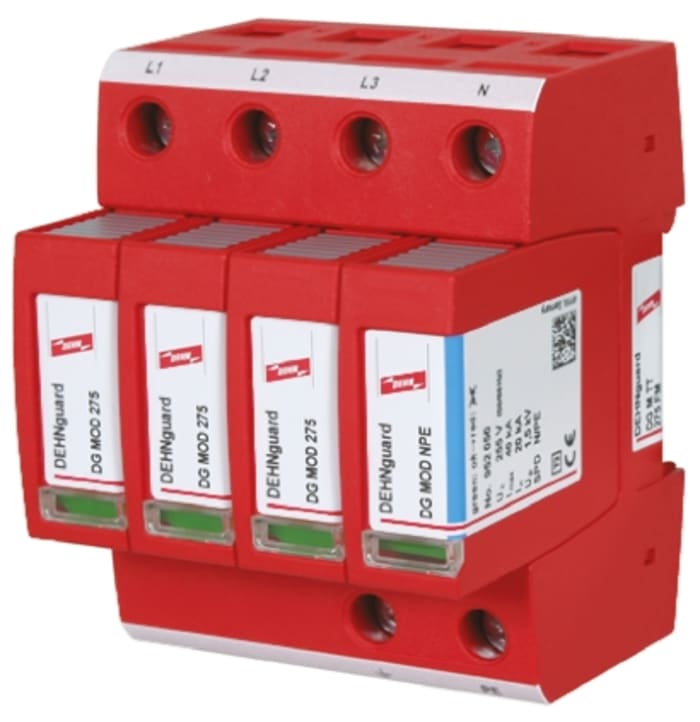Technical Document
Specifications
Brand
EatonSuppressor Type
3 Phase
Maximum Voltage Rating
270 V ac
Mounting Type
DIN Rail
Maximum Surge Current
45kA
Series
MA3100
Length
89mm
Depth
65mm
Height
92mm
Dimensions
89 x 65 x 92mm
Minimum Operating Temperature
-40°C
Maximum Operating Temperature
+80°C
Product details
Single & 3-phase Mains MA3100 Series
Surge protection designed to cope with high magnitude 10 / 350μs current waveforms as described in IEC 61312.
IEC Class II surge protection
Remote contacts available
Approvals
UL 1449
Surge Protection Devices, SPDs (DIN-rail)
Voltage surges, often referred to as spikes or transients are typically caused by switching of fluorescent lights, fuses blowing or nearby lightning activity. The worst voltage spikes are usually caused by lightning strikes and can reach up to 6000V, with current surges of over 3000A. The maximum size of the let-through voltage and current inrush depends on the location within the building's wiring system. BS7671: 2011 Amendment 1 Sections 443 and 534 cover risk assessment and provides guidance on protection of electronic equipment for installation engineers to follow. The fullest information on lightning and surge protection comes from the BSEN 62305 series of standards.

P.O.A.
1
P.O.A.
Stock information temporarily unavailable.
1
Stock information temporarily unavailable.

Technical Document
Specifications
Brand
EatonSuppressor Type
3 Phase
Maximum Voltage Rating
270 V ac
Mounting Type
DIN Rail
Maximum Surge Current
45kA
Series
MA3100
Length
89mm
Depth
65mm
Height
92mm
Dimensions
89 x 65 x 92mm
Minimum Operating Temperature
-40°C
Maximum Operating Temperature
+80°C
Product details
Single & 3-phase Mains MA3100 Series
Surge protection designed to cope with high magnitude 10 / 350μs current waveforms as described in IEC 61312.
IEC Class II surge protection
Remote contacts available
Approvals
UL 1449
Surge Protection Devices, SPDs (DIN-rail)
Voltage surges, often referred to as spikes or transients are typically caused by switching of fluorescent lights, fuses blowing or nearby lightning activity. The worst voltage spikes are usually caused by lightning strikes and can reach up to 6000V, with current surges of over 3000A. The maximum size of the let-through voltage and current inrush depends on the location within the building's wiring system. BS7671: 2011 Amendment 1 Sections 443 and 534 cover risk assessment and provides guidance on protection of electronic equipment for installation engineers to follow. The fullest information on lightning and surge protection comes from the BSEN 62305 series of standards.

